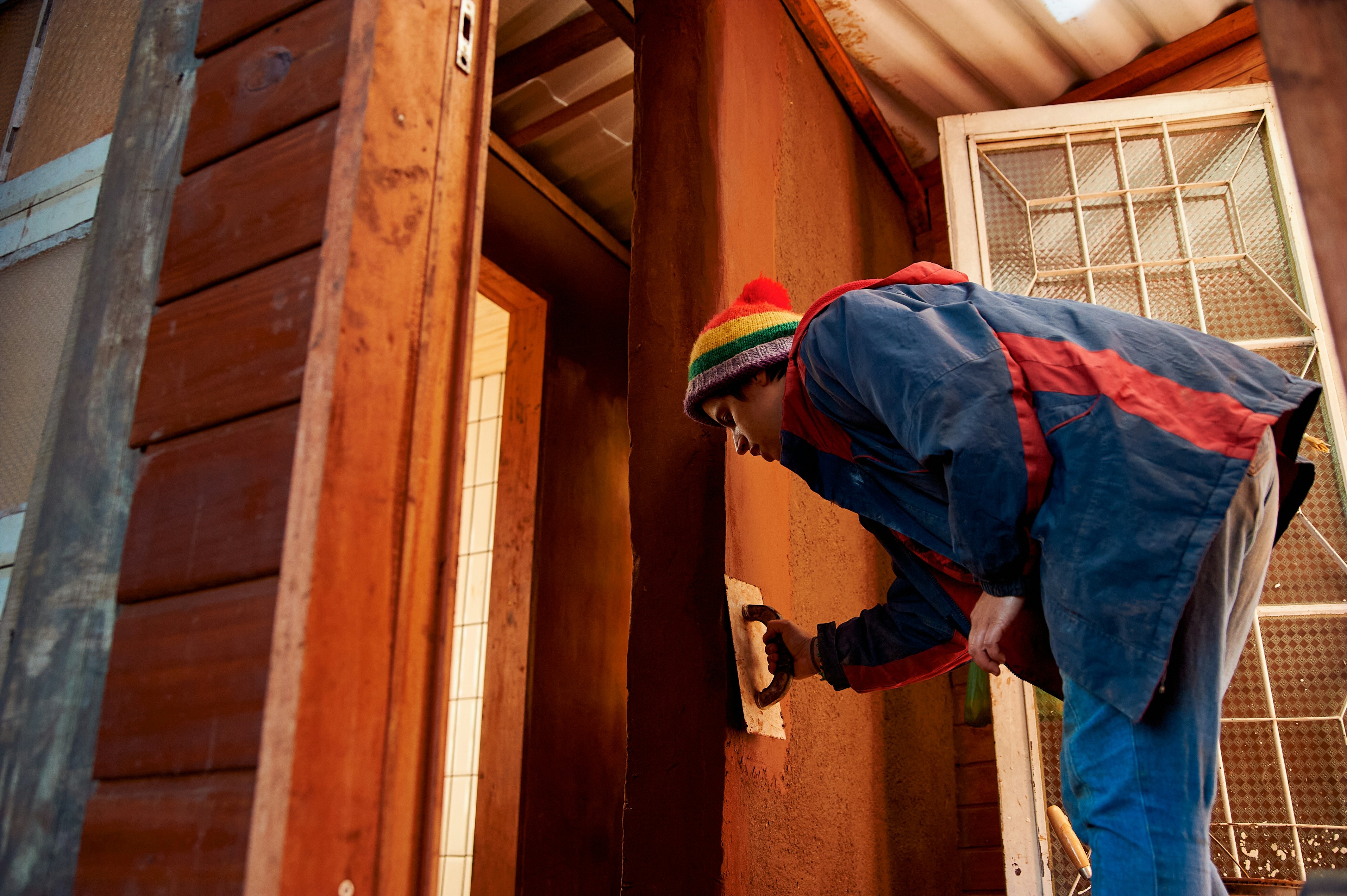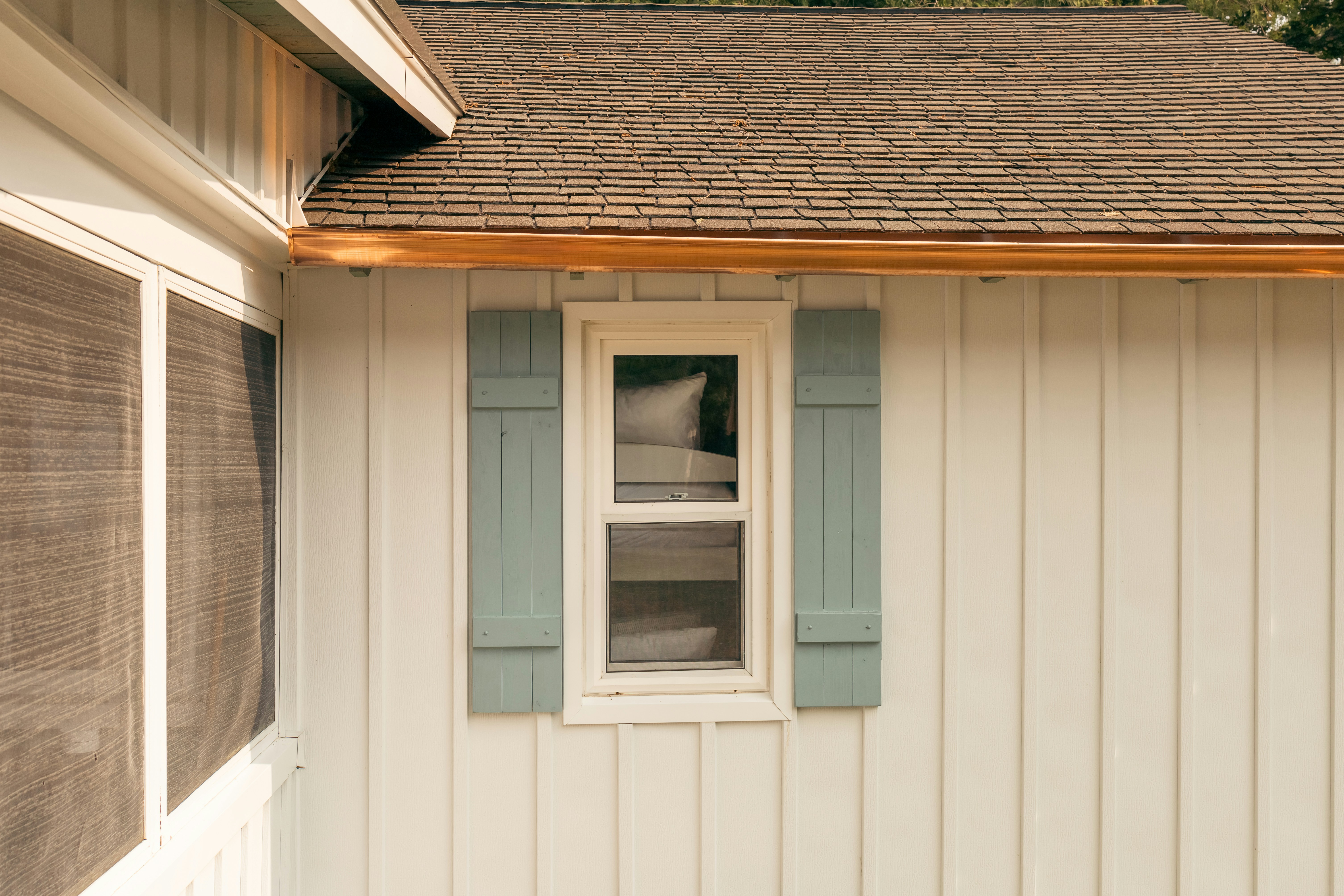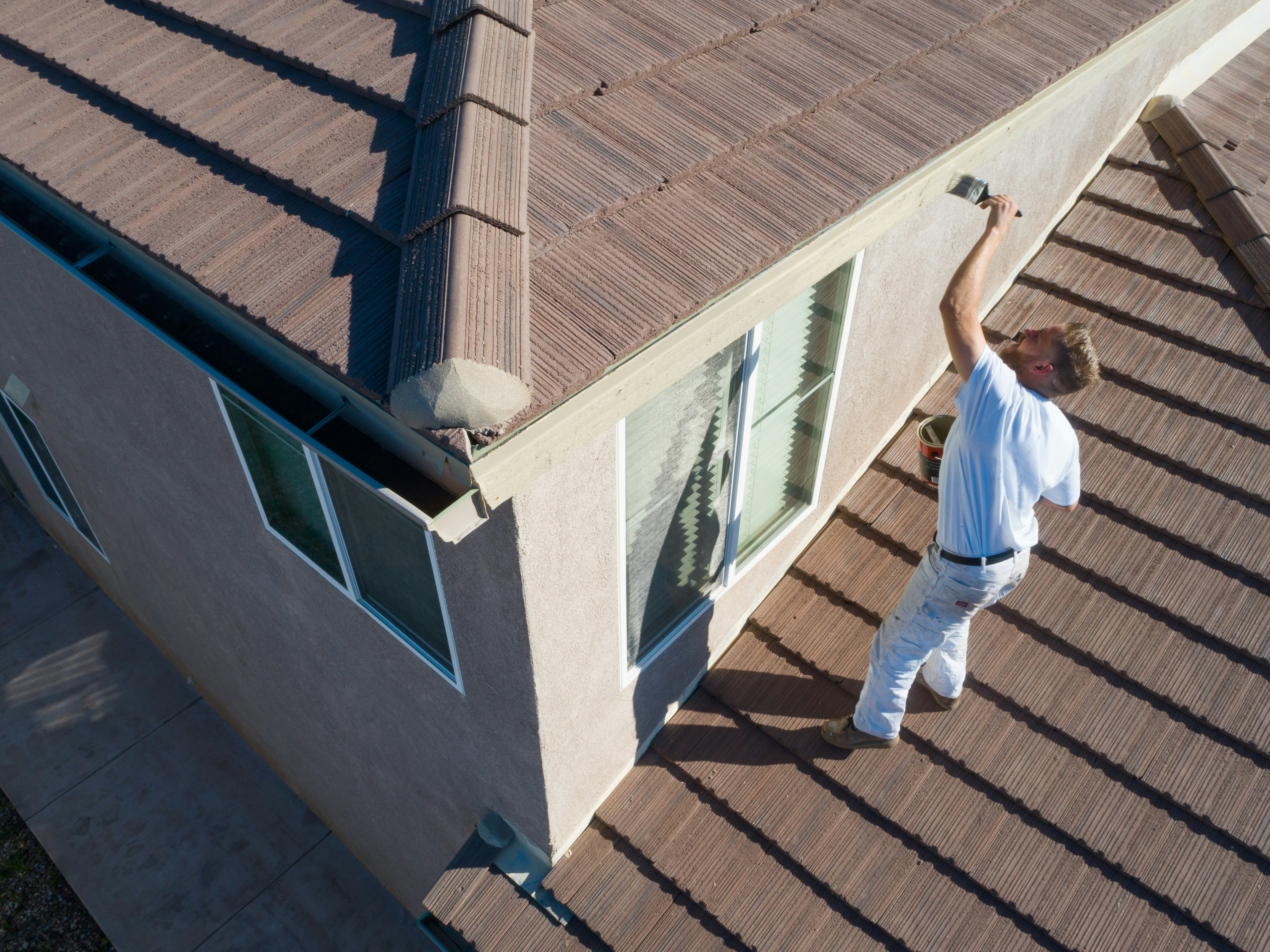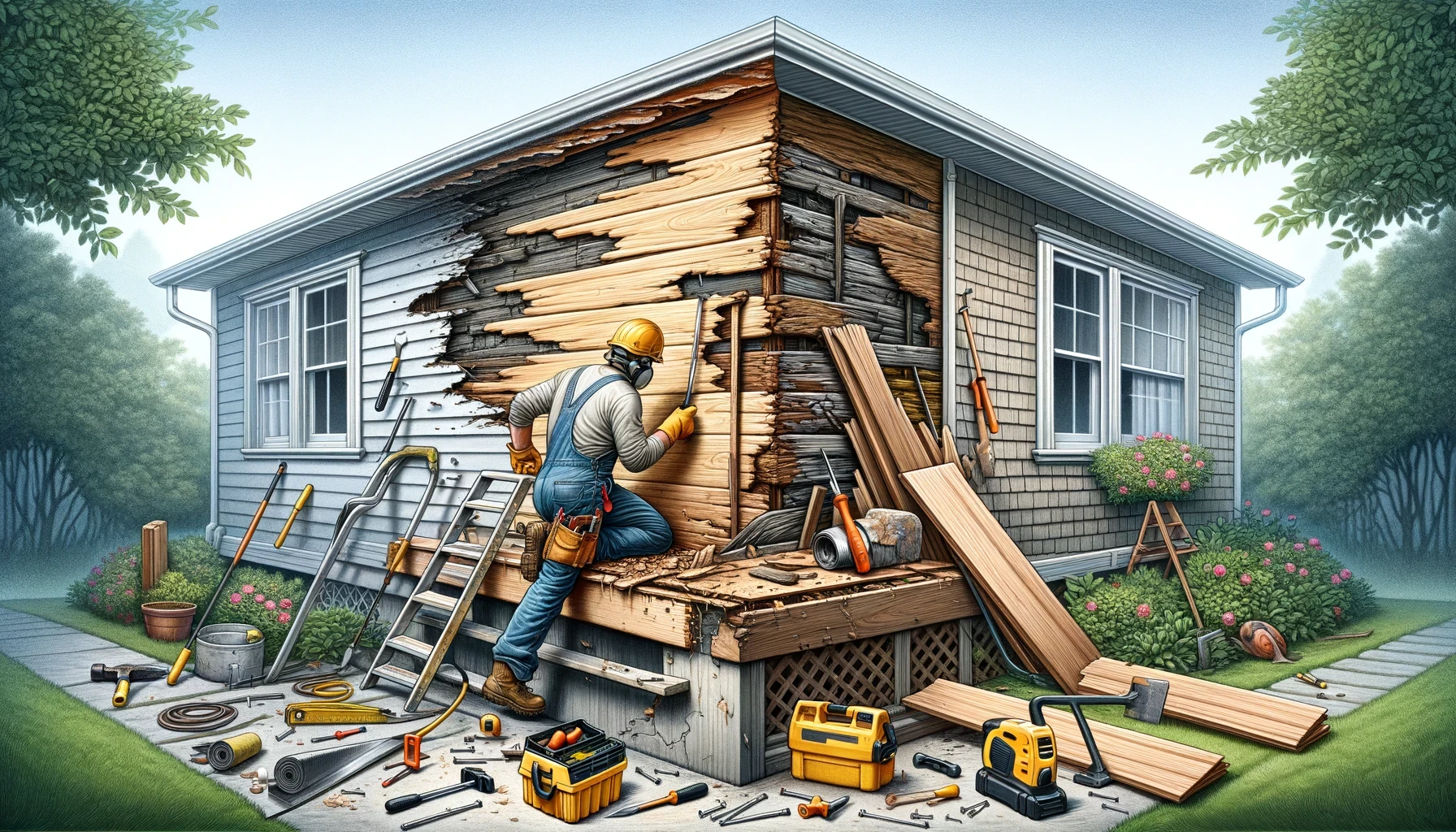
If you’ve spotted rotted wood siding on your home, prompt action is necessary to prevent further damage. Whether you’re facing minor decay or extensive damage, understanding your next steps is critical. Our guide zeroes in on the signs of deterioration, evaluates repair versus replacement, and provides actionable advice for tackling rotted wood siding to restore your home’s safety and curb appeal.
Key Takeaways
Early identification of wood rot signs, such as warping, bulging, holes, and cracks, is essential for timely repairs to maintain the structural integrity and aesthetics of the home.
Neglecting rotted siding can lead to serious structural damage, pest infestations, mold growth, and increased energy costs, making prompt repair or replacement crucial.
Professional installation is recommended for replacing rotted wood siding to ensure safety, compliance with building codes, and to preserve warranties, with routine maintenance and protective treatments key to extending siding longevity.
Identifying and Understanding Rotted Wood Siding
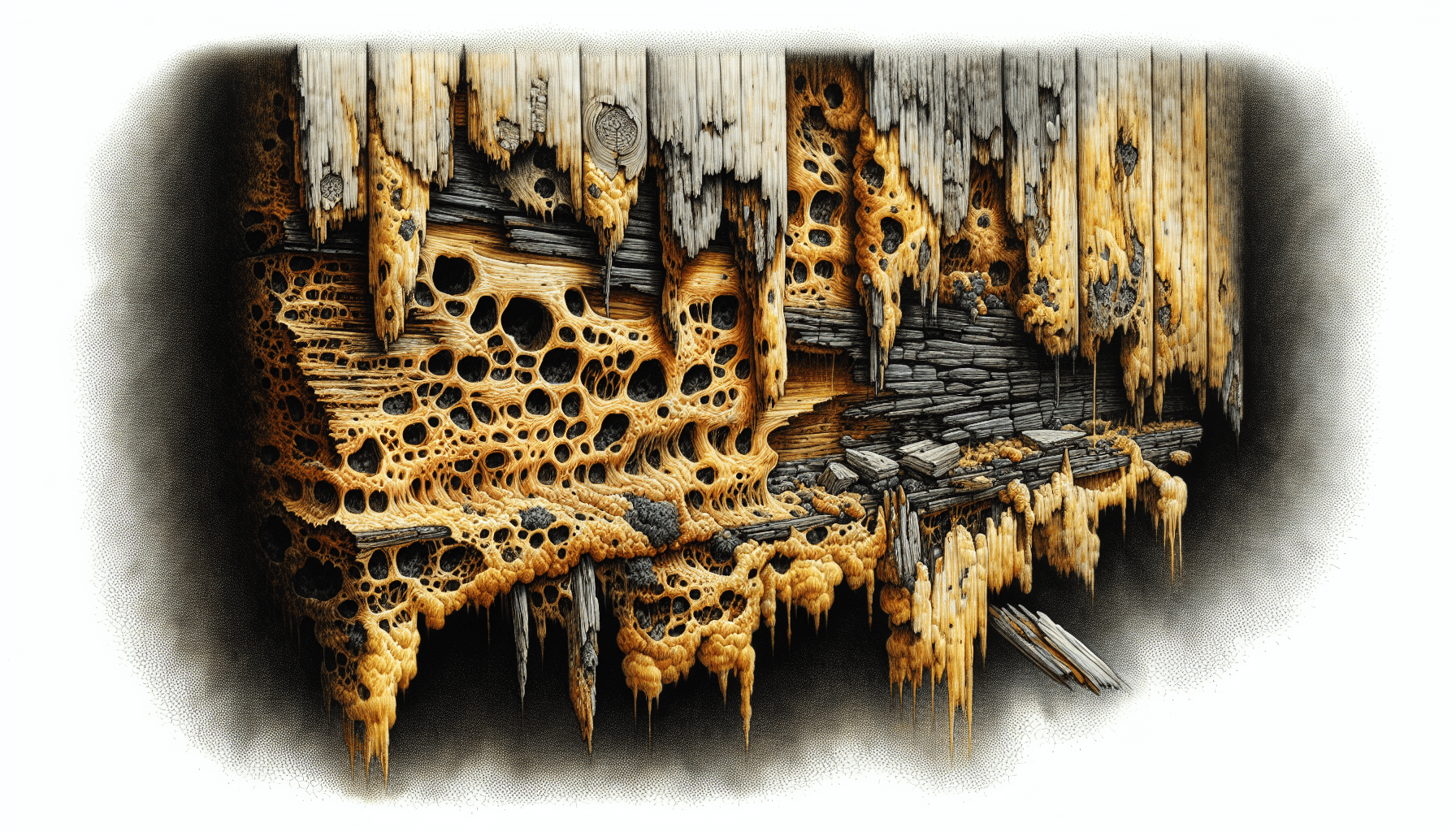
Recognizing rot in your wood siding early on is crucial to preserving the integrity and beauty of your home. Wood rot can sneak up on you, often starting subtly and, if ignored, leading to significant damage. Soft spots, discoloration, and crumbling wood are some of the telltale signs that your rotten wood siding is under attack by the elements.
Understanding these signs and knowing how to assess the extent of the damage is the first step in determining whether you can repair the siding or if replacement is necessary. Let’s delve deeper into spotting the signs and assessing the damage.
Spotting the Signs of Rot
Visible signs of wood rot are often the easiest to spot but can sometimes be mistaken for mere cosmetic imperfections. Here are some clear indicators that your wood may be rotting, or in other words, experiencing rotten wood:
Warping
Bulging
Holes
Cracks in your siding
These symptoms often suggest that the existing siding has been compromised by water and is no longer providing adequate protection for your home.
A practical method to confirm wood rot is by pressing a pen into discolored areas. If the wood feels soft or spongy, you likely have a rot problem that needs immediate attention. Regular inspections help catch these issues early before they develop into more severe problems, and using wood putty can be a solution for minor damages.
Assessing the Extent of Damage
Once you identify potential dry rot, the next step is to gauge how extensive the damage is. Wood that becomes soft or spongy when touched indicates significant water penetration and typically requires replacement rather than repair. This softness signals that the wood’s structural integrity has been compromised.
When the siding is removed, it’s essential to inspect the underlying wood framing and other support structures. This thorough inspection ensures all compromised areas are identified and addressed, preventing future issues.
The Rispects of Ignoring Rotted Siding

Ignoring completely rotted siding can lead to a cascade of problems far worse than the initial damage. The most immediate risk is structural damage. As wood rot progresses, it weakens the siding, potentially leading to a collapse that poses safety hazards for your home and its occupants. Additionally, the damage can extend to the roofing and framing, making your home more susceptible to weather damage.
Pest infestations are another significant risk. Termites and carpenter ants are drawn to rotted wood, exploiting holes in the siding to enter and destroy woodwork inside your home. Mold and mildew growth on the exterior can also indicate moisture issues, which often necessitate siding replacement to prevent health hazards and further structural compromise.
Lastly, failing to repair or replace rotted siding can lead to increased energy costs. Compromised insulation forces heating and cooling systems to work harder, driving up utility bills. Addressing wood rot promptly is not just about maintaining appearances; it’s about safeguarding your home’s overall health and efficiency.
Step-by-Step Guide to Repair Wood Siding
Repairing wood siding can seem daunting, but with the right approach, it becomes manageable and rewarding. This step-by-step guide will walk you through the process, from preparation to the final installation of new siding. Properly repairing wood siding not only enhances your home’s appearance but also extends the life of your exterior.
Before diving into the repair process, it’s essential to prepare adequately. This includes wearing safety gear, using the right tools, and understanding the techniques to minimize further damage. Once prepared, you can move on to removing the damaged siding and installing new wood siding with confidence.
Preparing for Repair
Safety is paramount when dealing with wood siding repair. Before starting, ensure you have the necessary safety gear, such as gloves and eye protection, to minimize injury risk. Professionals use specific equipment and techniques, like minimizing dust and using appropriate lifting methods, to ensure a safe and efficient repair process.
Proper preparation of materials is also crucial. Predrilling holes for nails can prevent damage to the underlying structures during the repair process. By taking these preparatory steps, you set the stage for a smooth and successful repair.
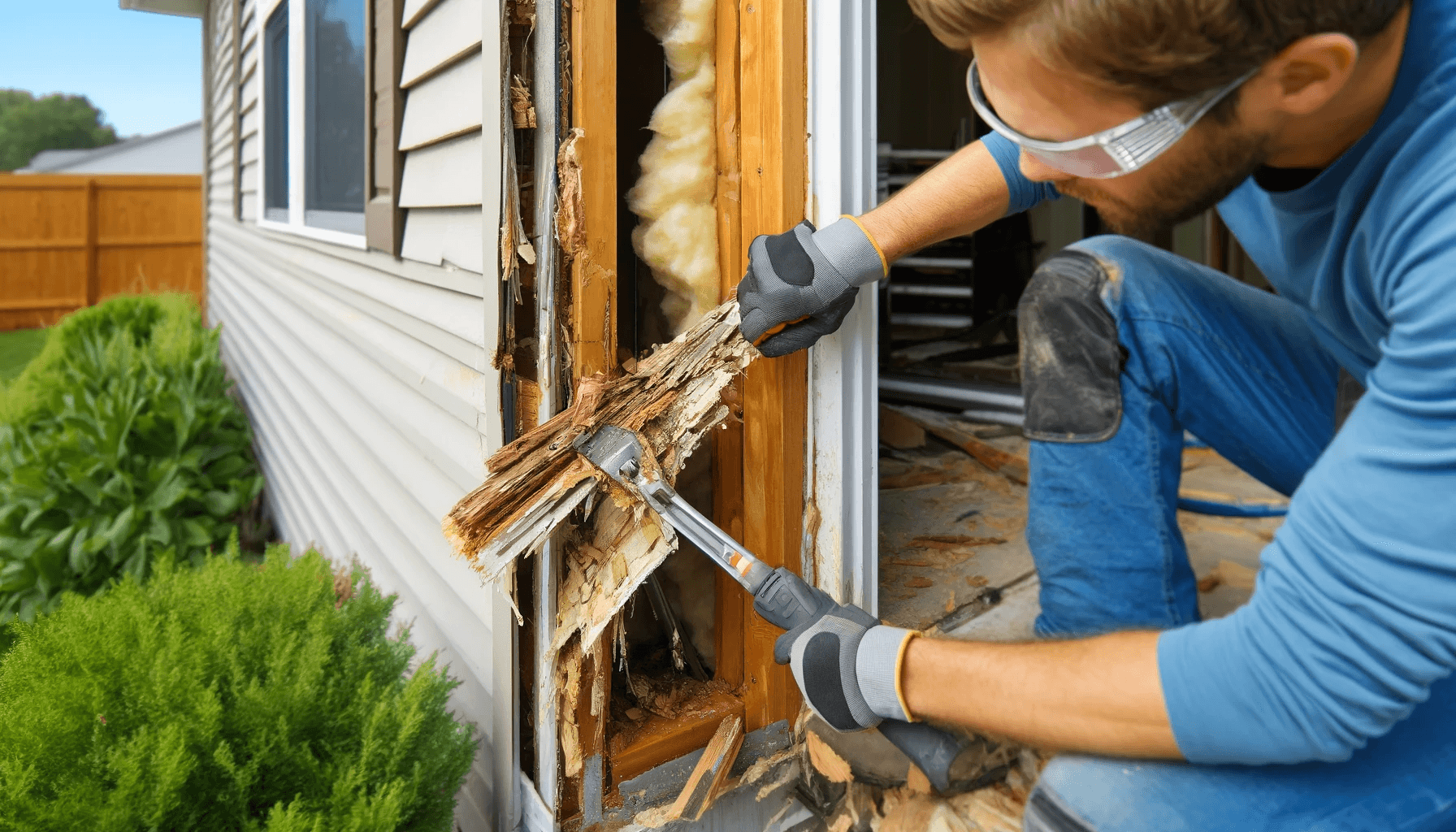
Removing Damaged Siding
Removing damaged siding requires patience and precision. Begin by using a utility knife to carefully cut through the caulking and paint surrounding the damaged board. This will help to cleanly separate the board from the surrounding area. This step prevents damage to adjacent boards during removal. Once the edges are free, use a multi-tool with a wood blade to carefully saw off the damaged portion of the siding.
Next, slide the hammer’s claw under the exposed nails to pull them free and use a pry bar to loosen and remove the rotted siding board. Protecting surrounding materials is essential to ensure a precise fit for the replacement patch.
Installing New Wood Siding
Installing new wood siding involves several careful steps:
Use a speed square to mark a straight vertical line on the wood siding for a precise cut.
The replacement board should be slid under the existing board above.
Nail down the replacement board securely.
Level the replacement board with adjoining boards.
Sealing the seams with outdoor caulk is crucial to prevent moisture penetration. After installing and sealing, finish the siding with a coat of primer and matching exterior paint to ensure durability and a uniform appearance.
When to Replace Wood Siding
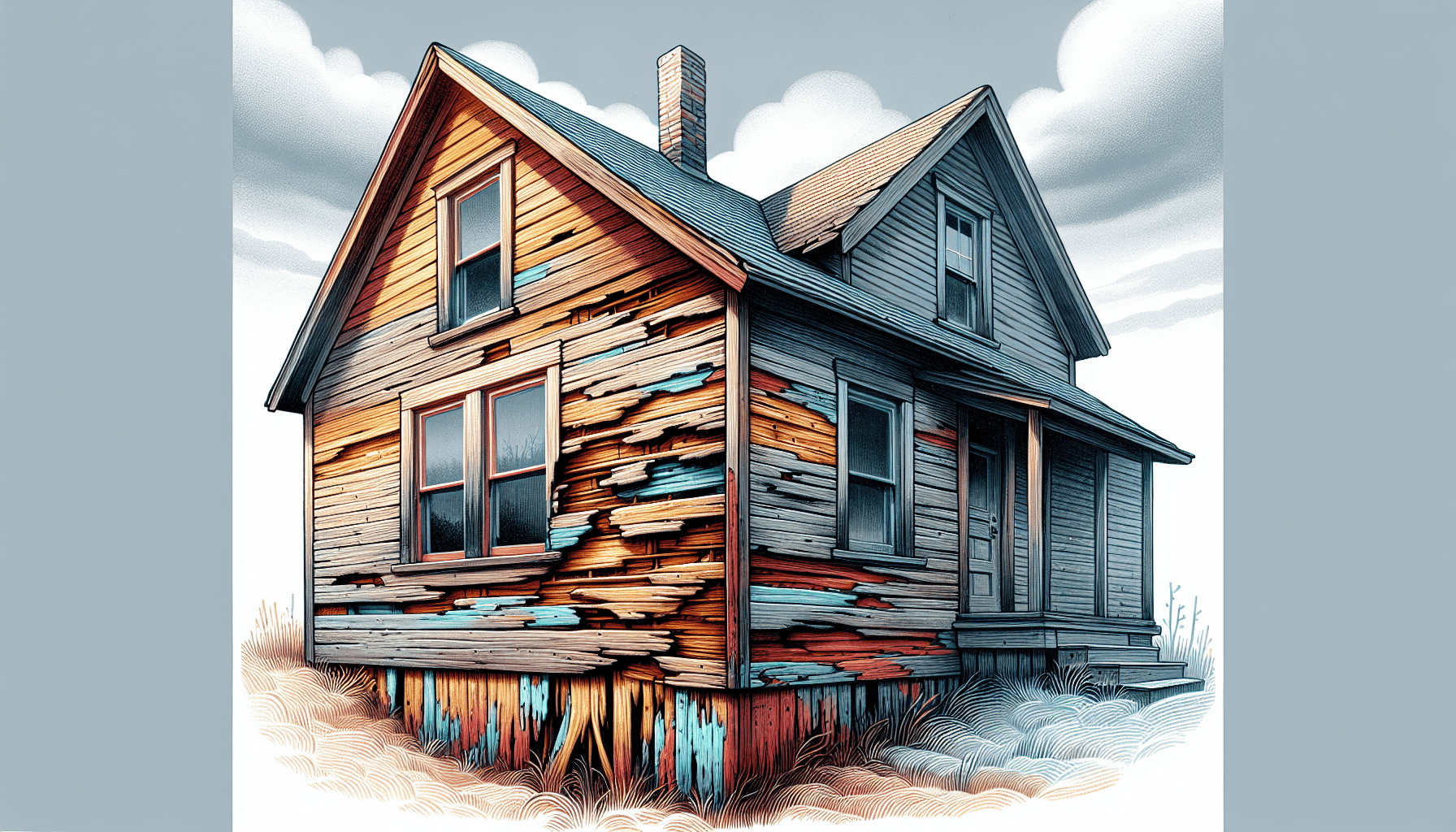
Sometimes, repair isn’t enough, and replacing wood siding becomes inevitable. Peeling paint and severe fading before the expected lifespan can indicate that the weatherproofing is no longer effective and that it’s time for replacement. Additionally, wood siding that no longer provides adequate insulation, leading to increased heating and cooling bills, is a clear signal that replacement is necessary.
Frequent and costly maintenance also suggests that replacing the siding entirely is a more financially wise choice. Extensive rot or irreparable damage necessitates replacing wood siding beyond what simple repairs can address.
Choosing Replacement Siding Materials
Choosing the right replacement siding material is crucial for long-term durability and aesthetics. Some wood species, like cedar, redwood, and cypress, offer natural resistance to rot and insects, making them ideal for siding. These woods not only provide dimensional stability but also enhance the natural beauty of your home.
For those seeking alternatives to traditional wood, fiber cement is a popular option known for its durability and high resistance to rot. This material can mimic the look of wood while offering superior protection against the elements.
Professional Installation vs. DIY
Deciding between professional installation and DIY involves weighing the pros and cons. DIY siding replacement can be complex and requires a high skill level. Improper installation can lead to further damage, increased costs, and the need to redo the work.
Professional installers ensure wood siding is properly installed to last for decades, maintaining structural integrity and preventing leaks or drafts. Hiring professionals also ensures compliance with building codes and regulations, preserving manufacturer warranties and ensuring safety.
Maintaining Your Home's Wood Siding
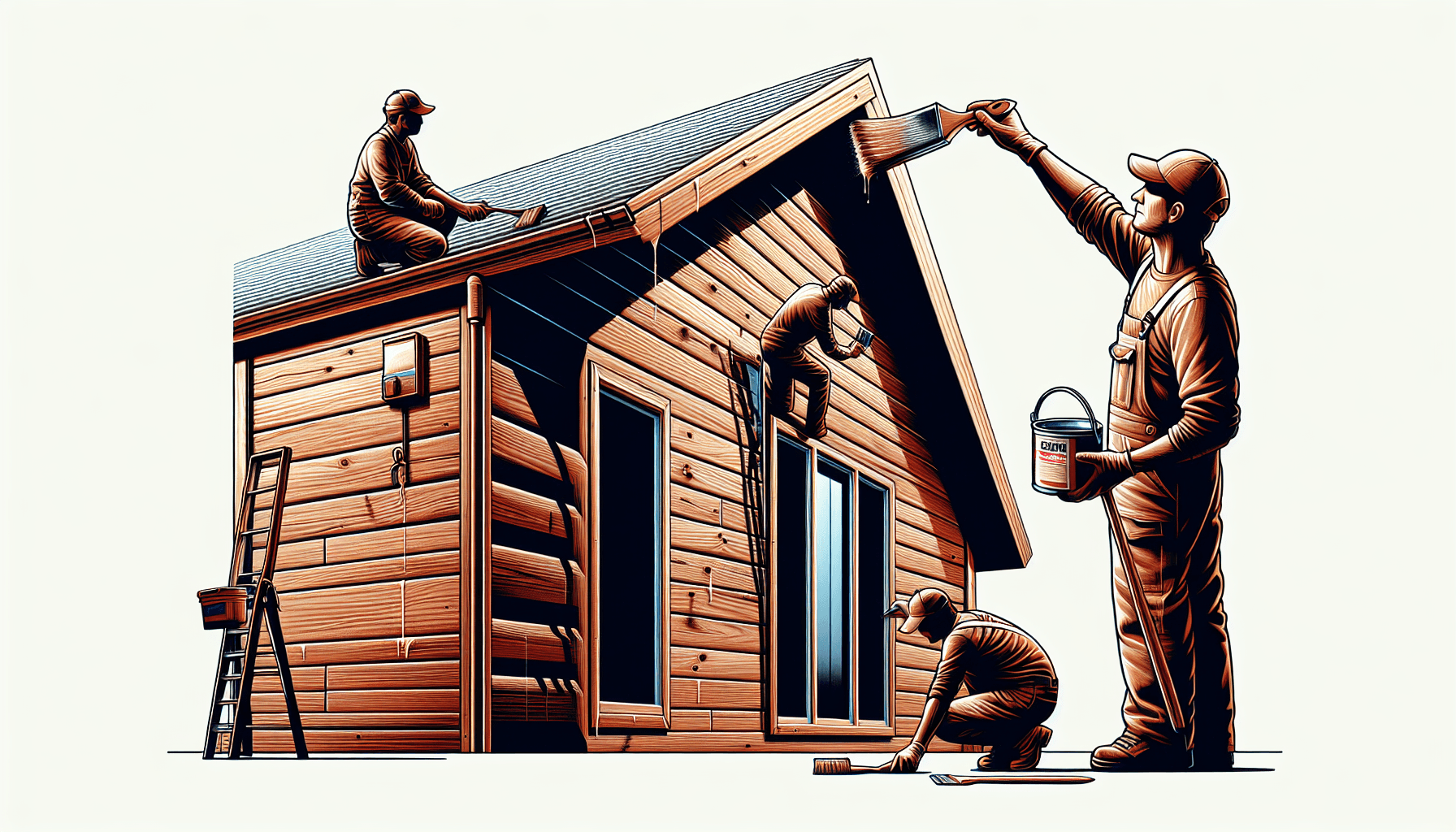
Regular maintenance is essential for the longevity of wood siding. Routine checks and upkeep can prevent decay and ensure your siding performs optimally. Semi-annual inspections, cleaning, and addressing minor issues promptly can save you from costly repairs or replacements in the future.
Protective treatments like paint, stain, or clear sealer are also crucial. These treatments shield the wood from moisture and UV damage, preserving its appearance and structural integrity.
Routine Checks and Upkeep
Semi-annual inspections, preferably in fall and spring, help identify maintenance needs for wood siding. Annual cleaning with warm, soapy water and a soft-bristled brush prevents dirt accumulation. Peeling paint is a warning sign of potential moisture infiltration, which can lead to rot if neglected.
Cracks and holes in wood siding should be addressed promptly to prevent insect infestations and further damage. Regular upkeep ensures your siding remains in good condition and extends its lifespan.
Protective Treatments for Wood Siding
Applying protective treatments like paint, stain, or clear sealer is vital for preventing moisture and UV damage. After priming, new wood siding requires two coats of paint to ensure adequate coverage and protection. Transparent, oil-based stains are user-friendly and make application mistakes less noticeable.
Colored stains are ideal for those who wish to change the wood siding color while preserving the wood texture. Clear sealers should be reapplied every two years to maintain protection.
Innovative Alternatives to Traditional Wood Siding
Innovative alternatives to traditional wood siding offer various benefits. Engineered wood siding combines the aesthetic appeal of solid wood with enhanced durability, often at a lower cost. Fiber cement siding is known for its moisture resistance and ability to withstand harsh weather conditions and pests.
Vinyl siding is a cost-effective material available in various styles, but it carries a higher risk of flammability compared to less combustible alternatives. Metal siding, made of aluminum or steel, offers exemplary durability and low maintenance but can be more expensive due to weight and potential for rust.
Expert Advice: Seeking Professional Help for Rotted Siding
Seeking professional help for replacing rotten wood siding is crucial for ensuring safety and quality. Professional contractors conduct thorough inspections to assess the severity of wood rot and determine the appropriate course of action for rotted siding. Consulting with experts like Northface Construction can help avoid the risks associated with DIY repairs and benefit from professional evaluations.
Professionals manage the entire process, from inspection to preparation and execution, ensuring that the repairs or replacements are done correctly and efficiently.
Finding the Right Contractor
Finding the right contractor involves considering their experience, expertise, and customer reviews. Hiring a professional contractor for wood siding repair or replacement can save time and alleviate stress, as they manage the entire installation process.
A qualified contractor ensures that the work is done correctly, preventing future issues and maintaining the integrity of your home’s exterior.
Understanding the Replacement Process
Understanding the professional replacement process is essential for peace of mind. It typically includes the following steps:
Thorough inspection to assess the full extent of the rot and determine the appropriate course of action.
Preparation of the area, including the careful removal of damaged boards to avoid impacting surrounding undamaged areas.
Replacement of the damaged boards with new, rot-resistant ones.
Proper sealing and finishing of the replaced boards to ensure long-lasting protection against future rot.
By following these steps, you can ensure a successful and effective replacement process.
The process ends with the precise installation of new boards, ensuring they are sealed and painted to match the existing house siding. Proper caulking of seams prevents future water penetration, ensuring the longevity of the new siding.
Summary
In summary, maintaining and addressing issues with your wood siding is crucial for the longevity and health of your home. From identifying and understanding the signs of rot to deciding when to repair or replace, each step is vital in preserving your home’s exterior.
We hope this guide has provided you with the knowledge and confidence to tackle rotted wood siding effectively. Whether you choose to handle the repairs yourself or seek professional help, taking action will ensure your home remains beautiful and protected for years to come.
Frequently Asked Questions
What are the first signs of wood rot in siding?
The first signs of wood rot in siding include soft spots, discoloration, and crumbling wood when pressed gently. Keep an eye out for these signs to catch wood rot early and prevent further damage.
How can I check for the presence of wood rot?
To check for wood rot, look for warping, bulging, holes, or cracks, and press a pen into discolored spots to test for softness. These signs can indicate the presence of wood rot.
Why is it important to address rotted siding immediately?
It is important to address rotted siding immediately because ignoring it can lead to structural damage, pest infestations, mold growth, and increased energy costs due to compromised insulation.
What are some signs that it's time to replace wood siding rather than repair it?
If you notice peeling paint before its expected lifespan, severe fading, inadequate insulation, and extensive rot or irreparable damage, then it's time to replace your wood siding.
What are the benefits of hiring a professional for wood siding replacement?
Hiring a professional for wood siding replacement ensures proper installation, compliance with building codes, preservation of warranties, and can save time and alleviate stress by managing the entire installation process.

